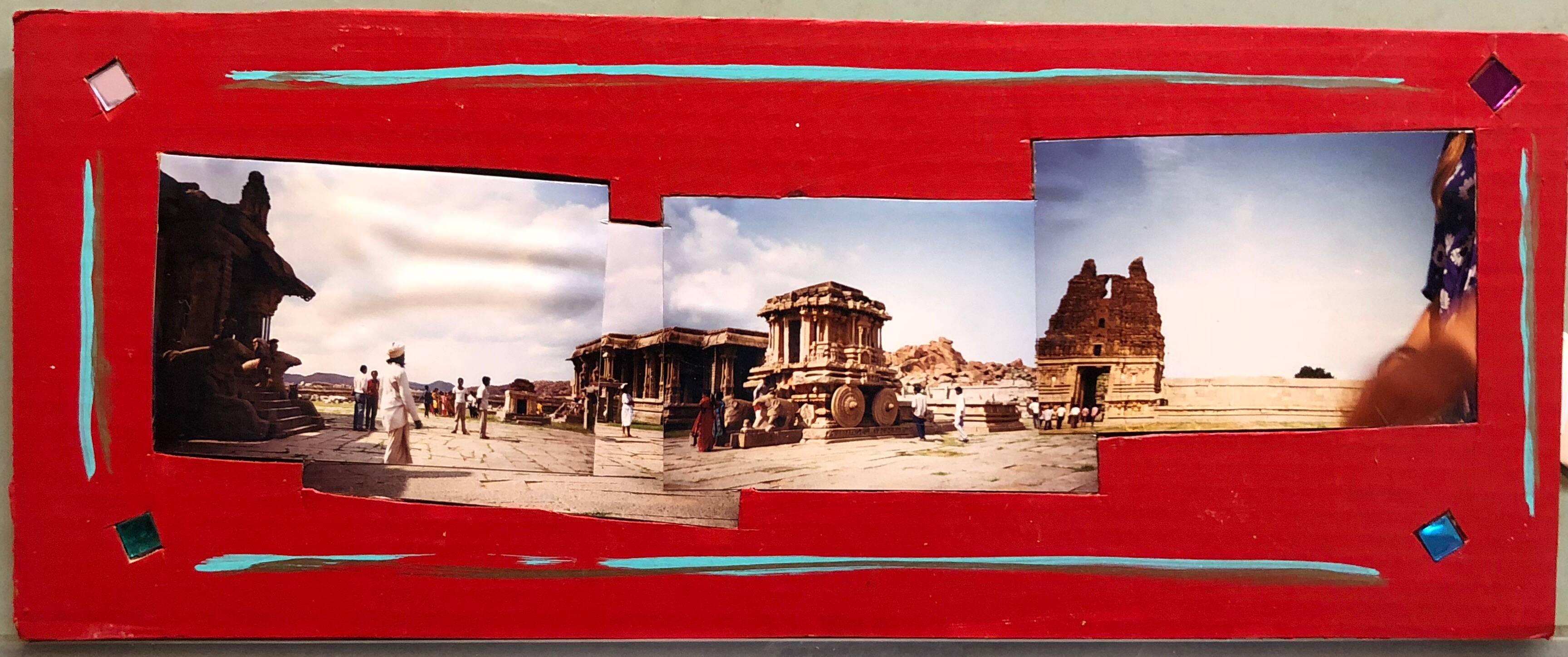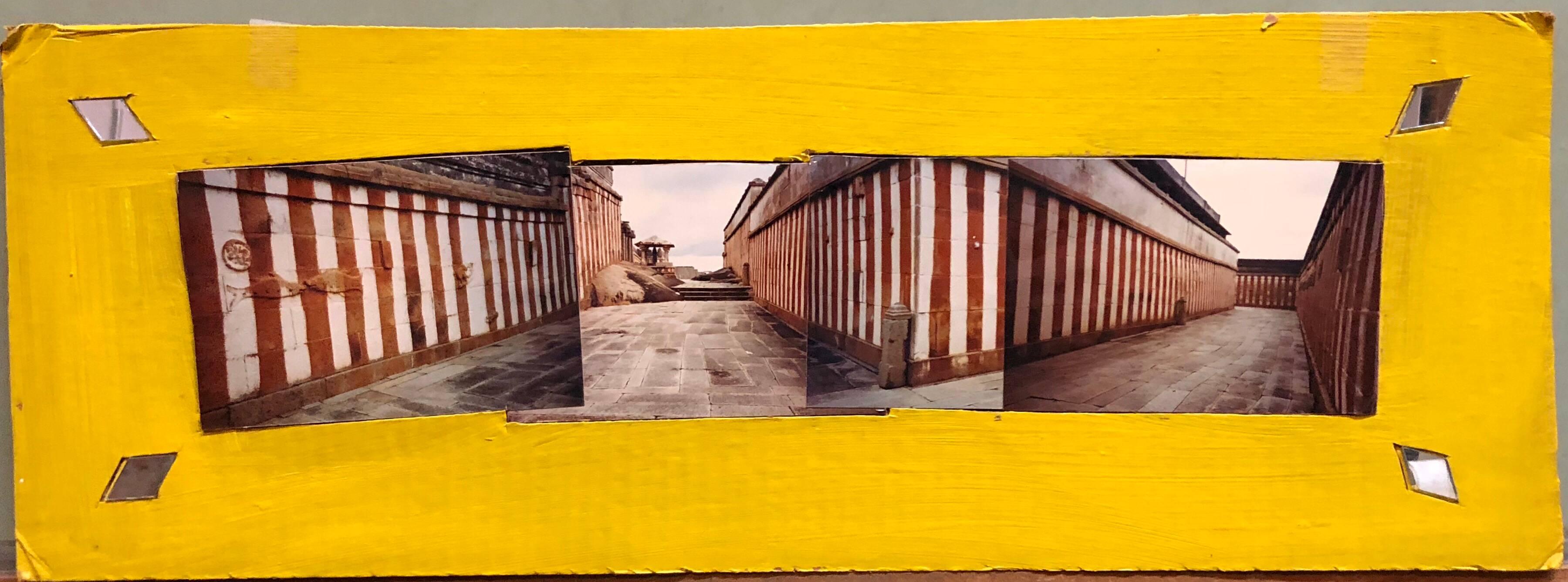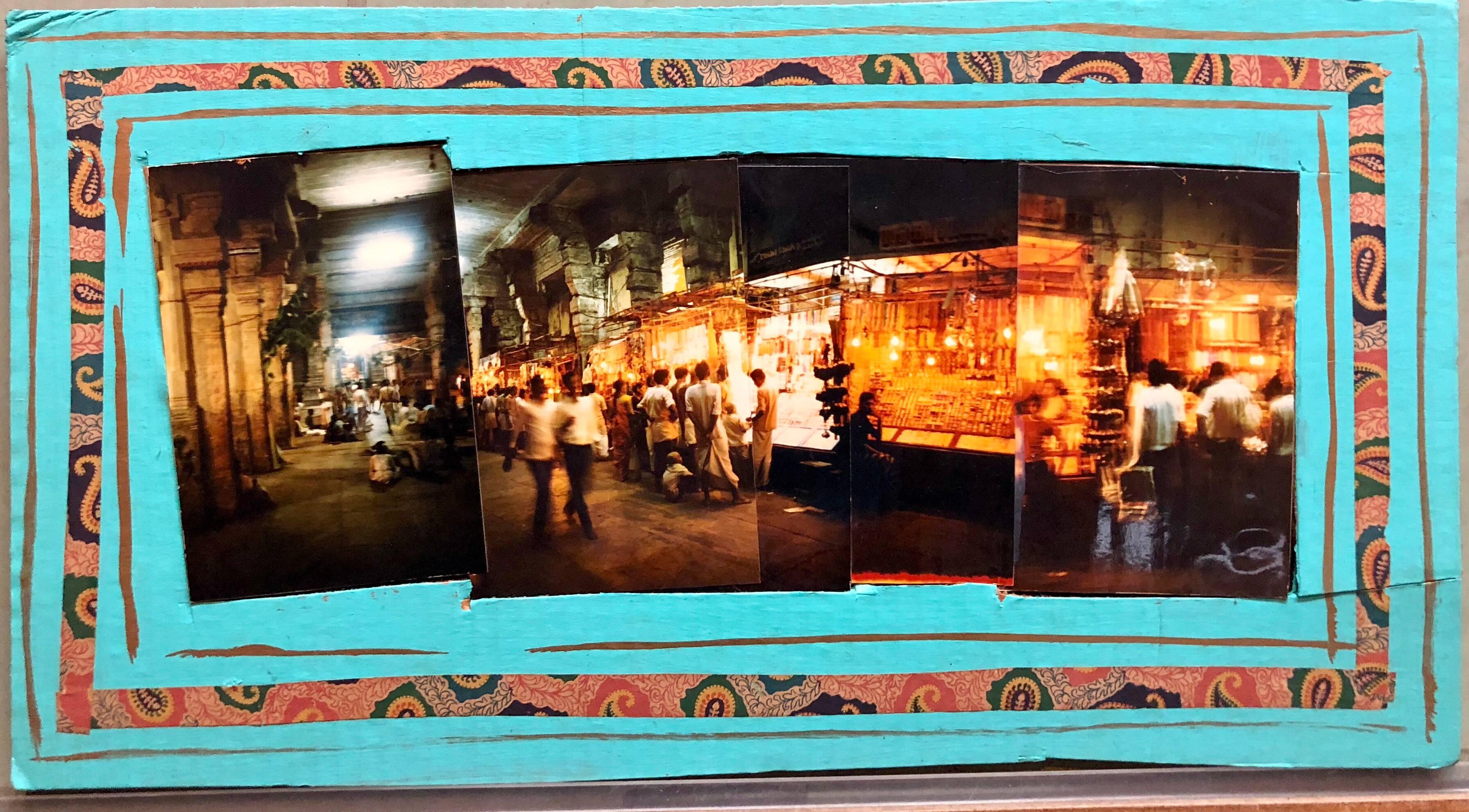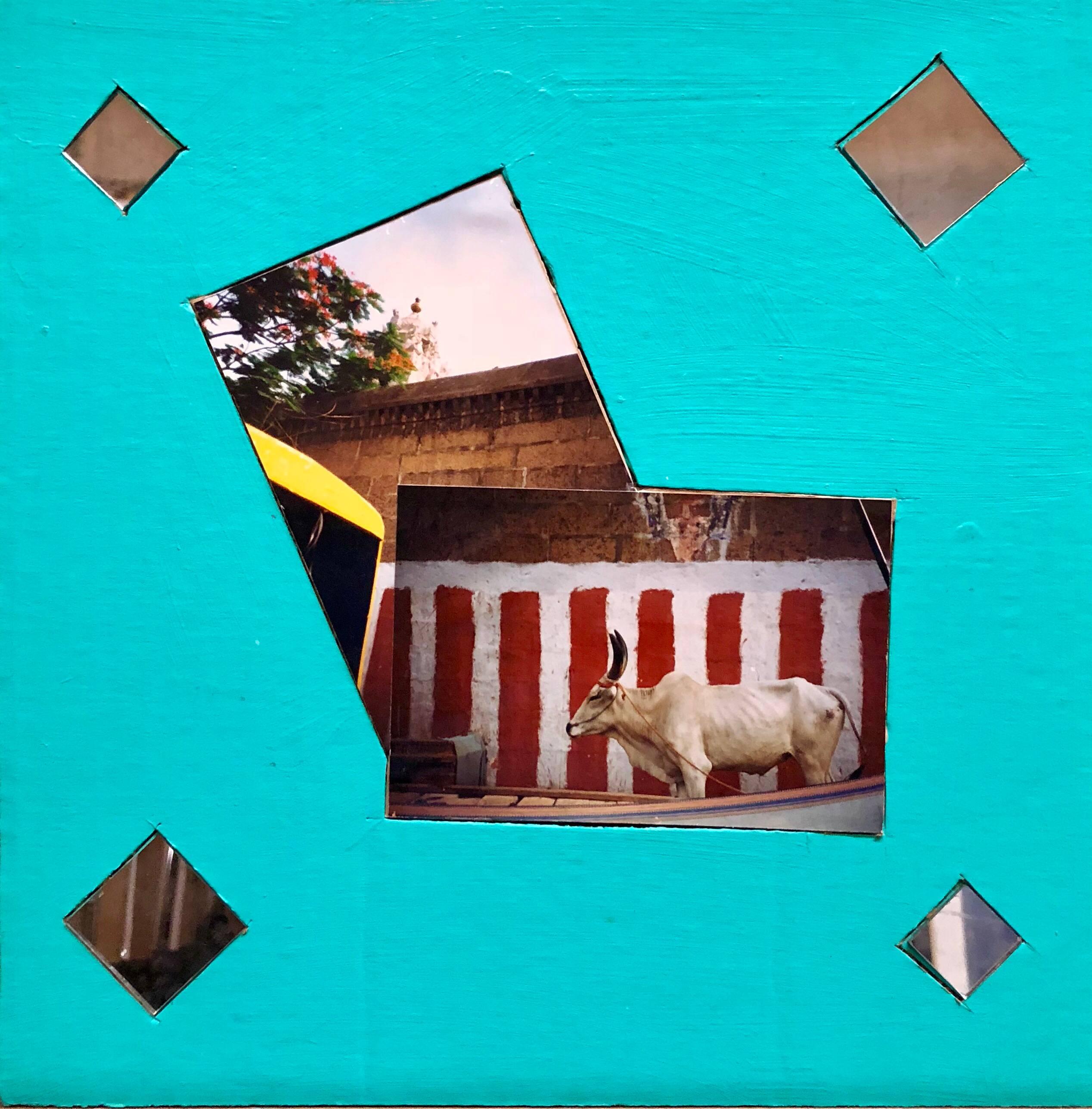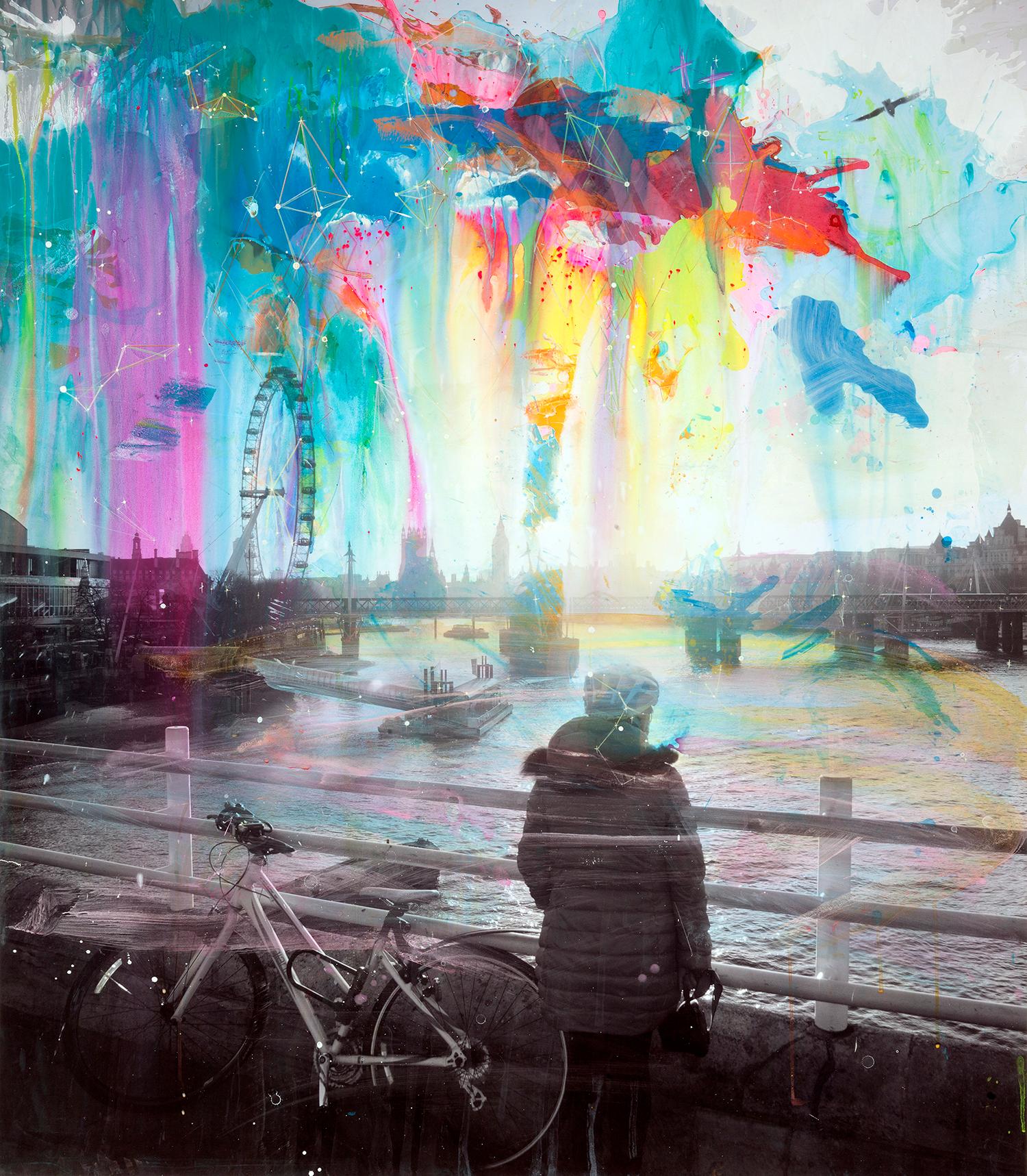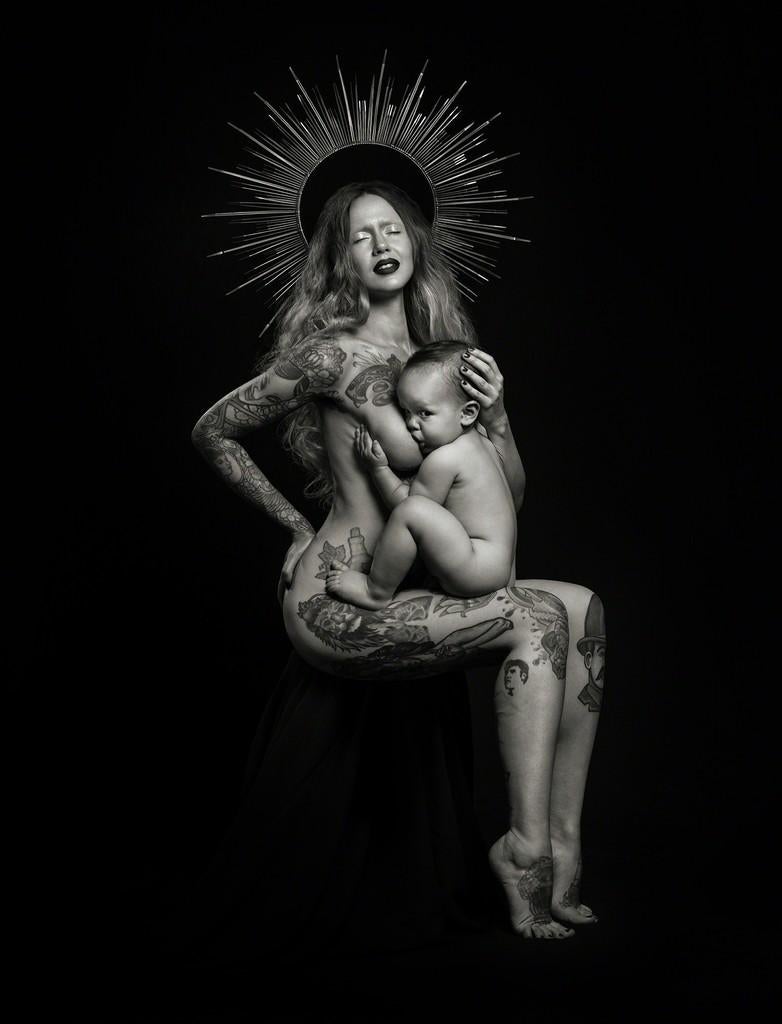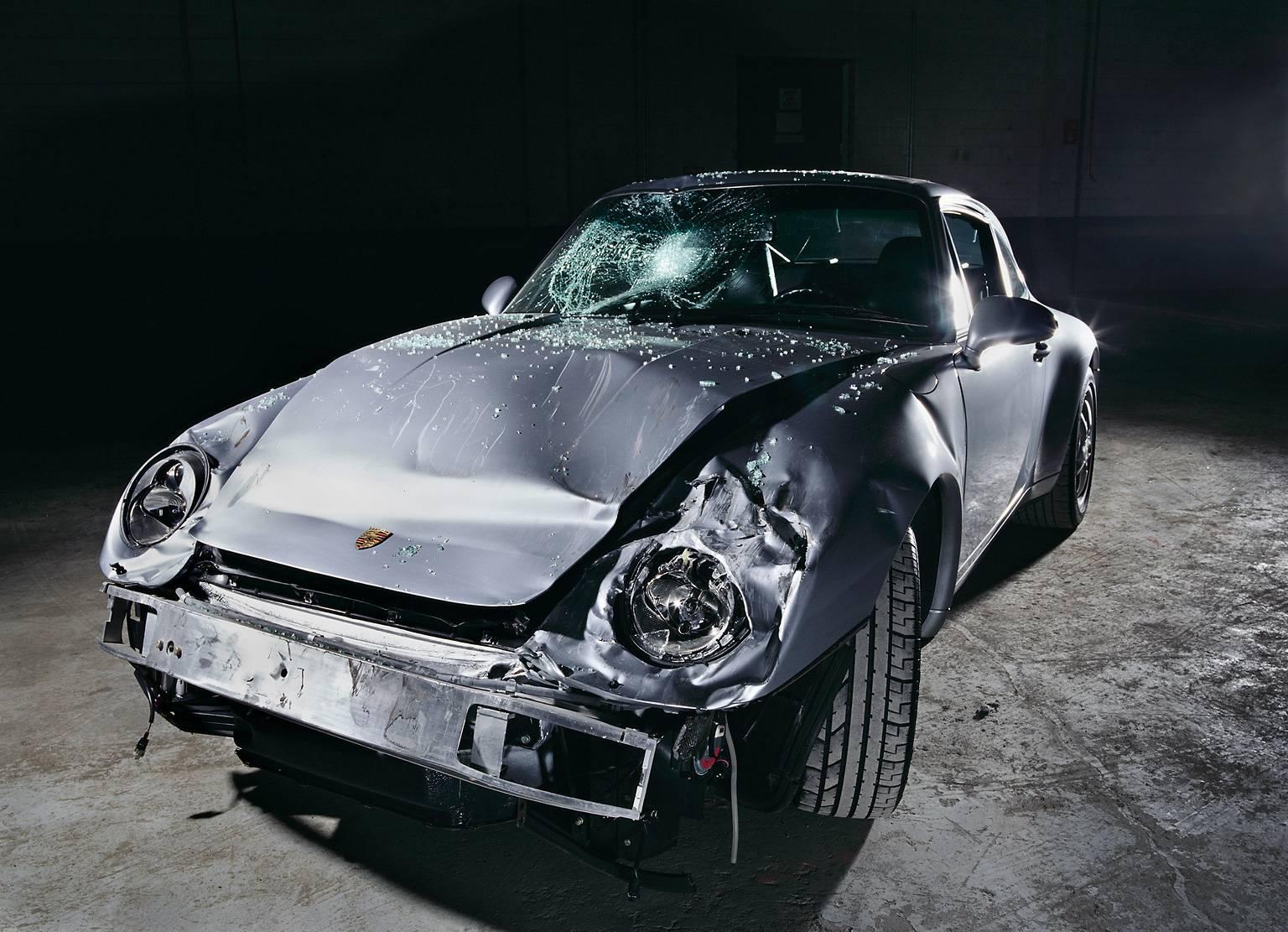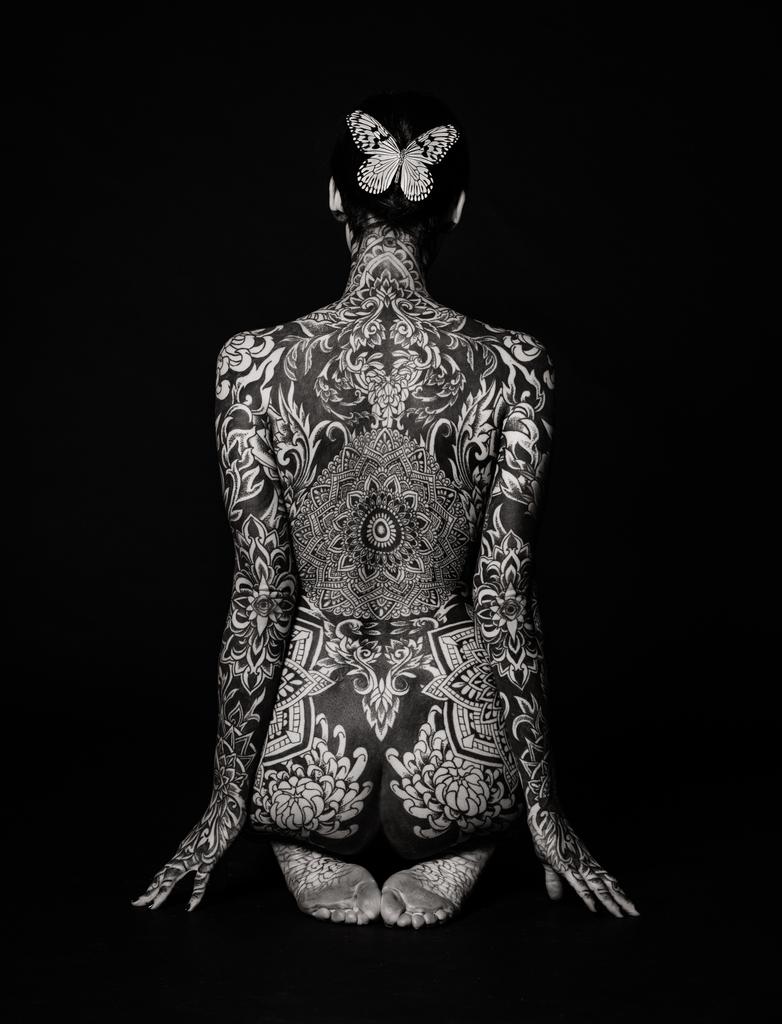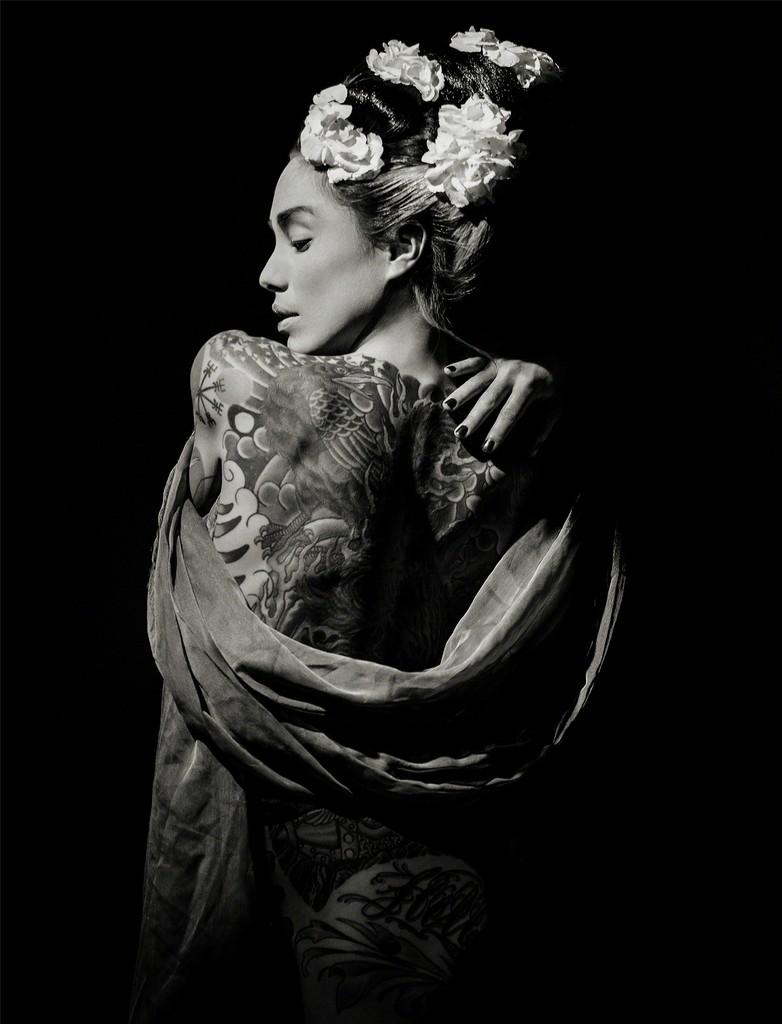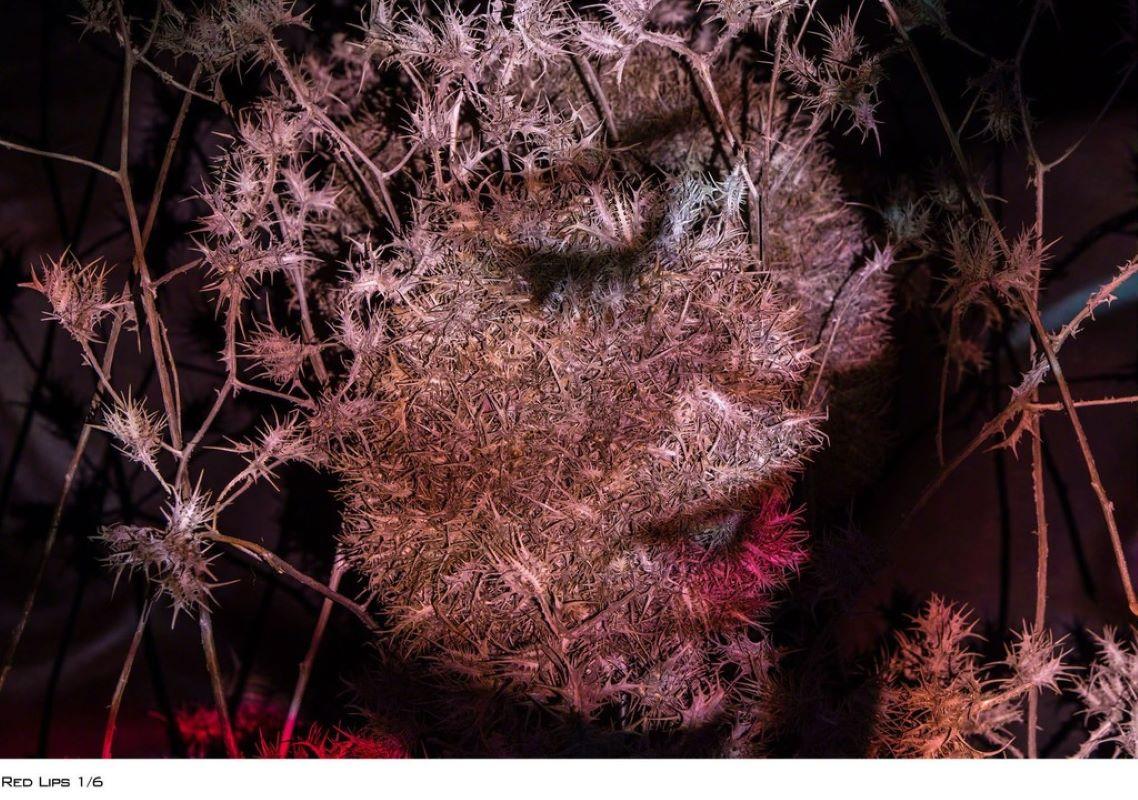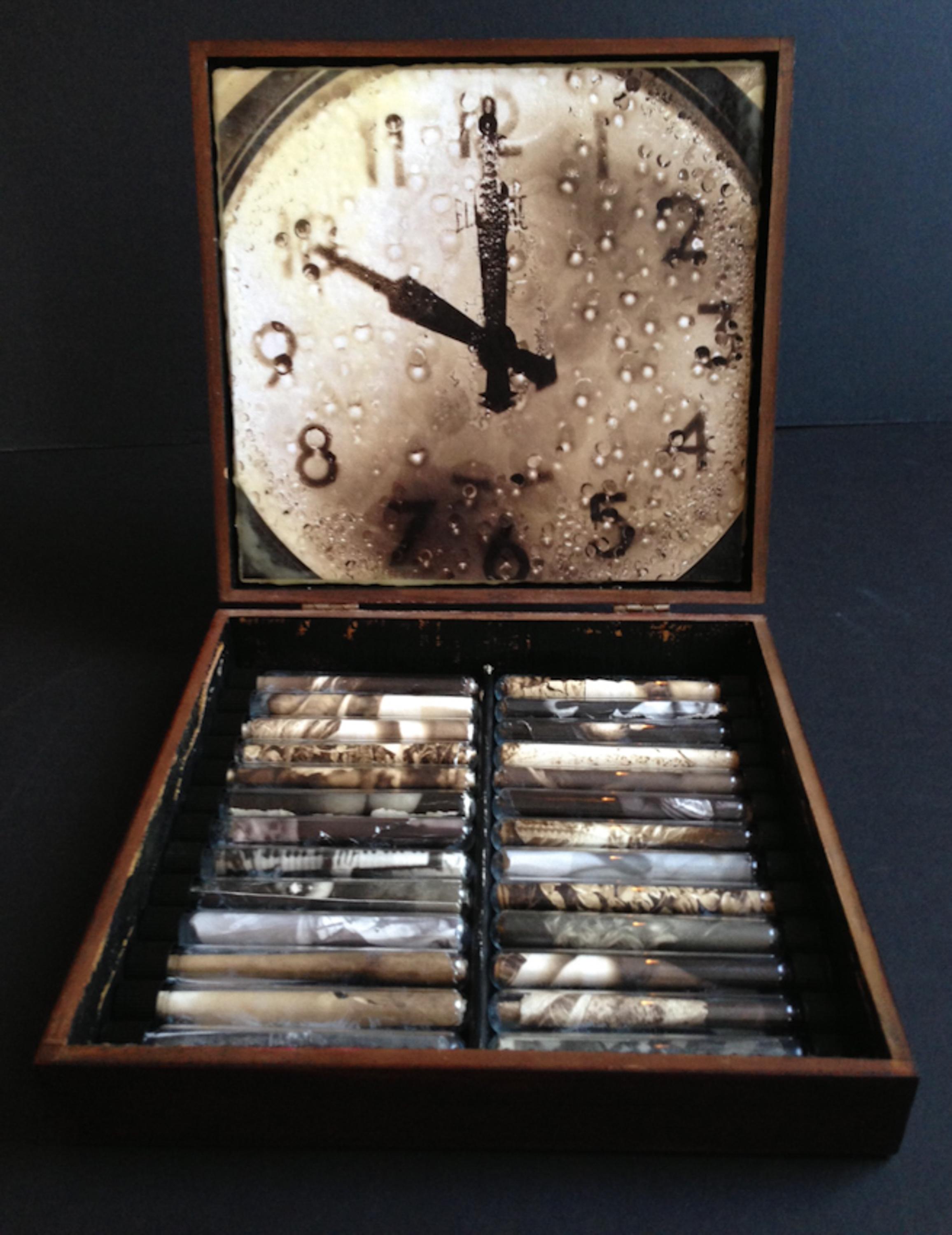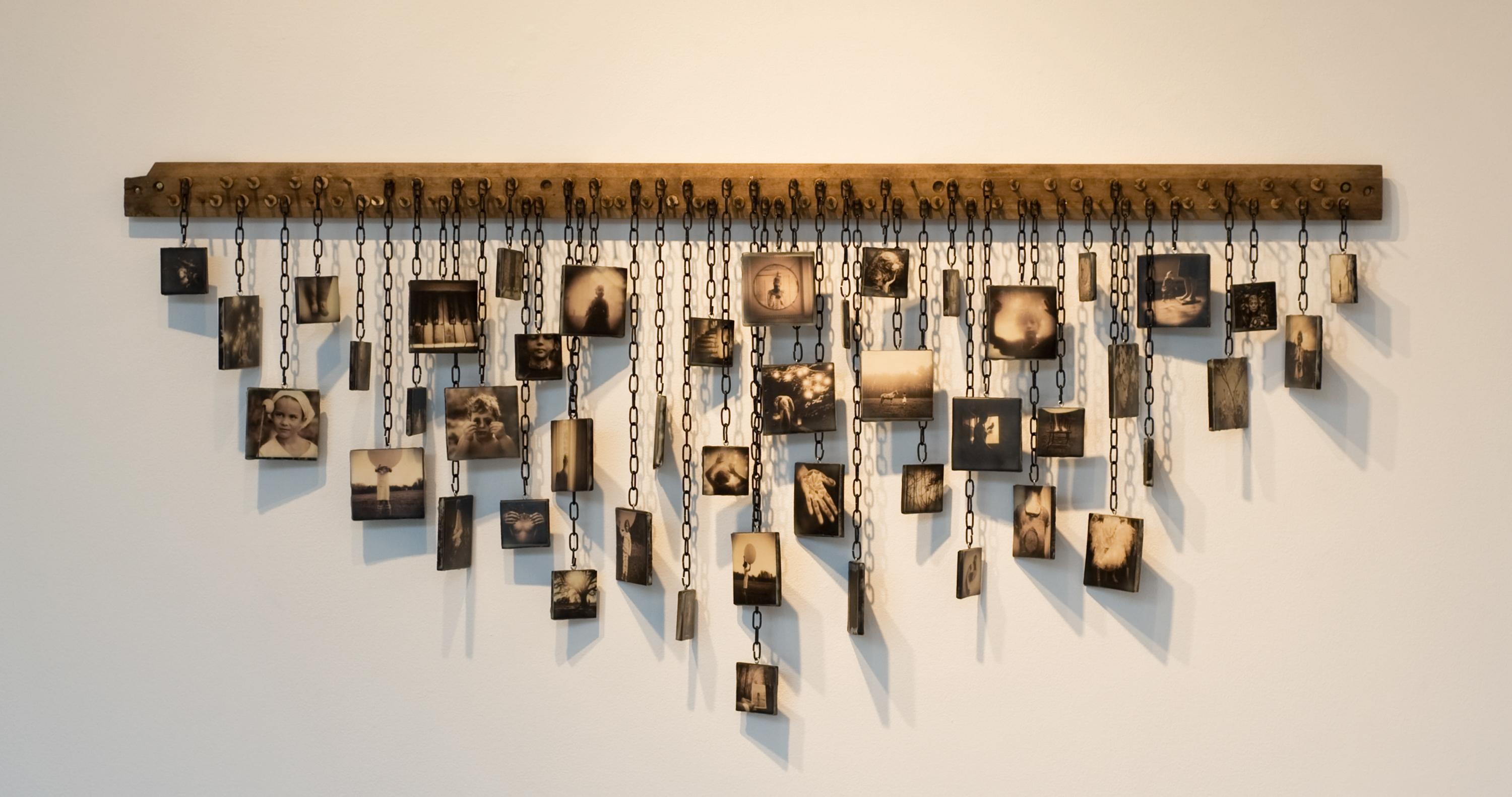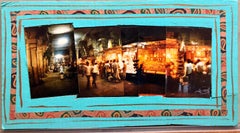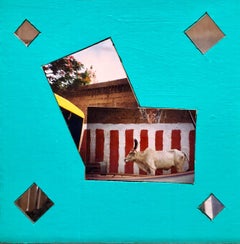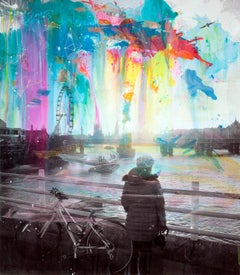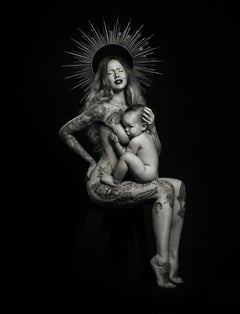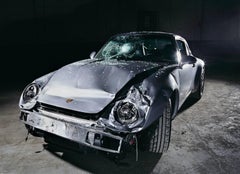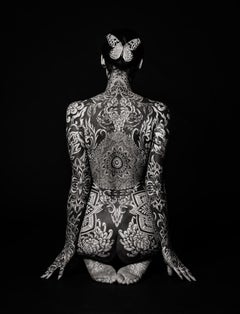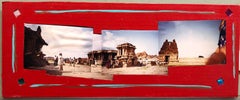
Tourists Hampi, India, 1992, Photo Prints on Cardboard, Collage, Mirror Insets
View Similar Items
Want more images or videos?
Request additional images or videos from the seller
1 of 9
Kim MacConnelTourists Hampi, India, 1992, Photo Prints on Cardboard, Collage, Mirror Insets1992
1992
About the Item
- Creator:Kim MacConnel (1946, American)
- Creation Year:1992
- Dimensions:Height: 8.5 in (21.59 cm)Width: 20.75 in (52.71 cm)
- Medium:
- Movement & Style:
- Period:
- Condition:corners of the cardboard lightly bumped. might be original to the piece. please see photos.
- Gallery Location:Surfside, FL
- Reference Number:1stDibs: LU3822875633
About the Seller
4.9
Platinum Seller
Premium sellers with a 4.7+ rating and 24-hour response times
Established in 1995
1stDibs seller since 2014
1,752 sales on 1stDibs
Typical response time: 1 hour
Authenticity Guarantee
In the unlikely event there’s an issue with an item’s authenticity, contact us within 1 year for a full refund. DetailsMoney-Back Guarantee
If your item is not as described, is damaged in transit, or does not arrive, contact us within 7 days for a full refund. Details24-Hour Cancellation
You have a 24-hour grace period in which to reconsider your purchase, with no questions asked.Vetted Professional Sellers
Our world-class sellers must adhere to strict standards for service and quality, maintaining the integrity of our listings.Price-Match Guarantee
If you find that a seller listed the same item for a lower price elsewhere, we’ll match it.Trusted Global Delivery
Our best-in-class carrier network provides specialized shipping options worldwide, including custom delivery.More From This Seller
View AllTourists Hampi, India, 1992, Photo Prints on Cardboard, Collage, Mirror Insets
By Kim MacConnel
Located in Surfside, FL
MacConnel, Kim Robert (American, California, born 1946)
Tourists, Hampi, India (Hampi is an ancient village in the south Indian state of Karnataka. It’s dotted with numerous ruined t...
Category
1990s Contemporary Abstract Paintings
Materials
Mirror, Acrylic Polymer, Mixed Media, Photographic Paper
Shravan Belagola, India, 1992, Photo Prints on Cardboard, Collage, Mirror Insets
By Kim MacConnel
Located in Surfside, FL
MacConnel, Kim Robert (American, California, born 1946)
Shravan Belagola Temple (Jain)
Shravanabelagola (Śravaṇa Beḷagoḷa) is a town located near Channarayapatna of Hassan district ...
Category
1990s Contemporary Abstract Paintings
Materials
Mirror, Acrylic Polymer, Mixed Media, Photographic Paper
Sri Ranganathanswamy Temple, Trichi, 1992, Photo Prints on Cardboard, Collage
By Kim MacConnel
Located in Surfside, FL
MacConnel, Kim Robert (American, California, born 1946)
Sri Ranganathanswamy Temple, Trichi, India (an ancient Indian city in India's southern Tamil Nadu state) 1992, commercial phot...
Category
1990s Contemporary Abstract Paintings
Materials
Acrylic Polymer, Mixed Media, Photographic Paper
Chindambaram Temple, Mixed Media Photo Collage on Cardboard
By Kim MacConnel
Located in Surfside, FL
MacConnel, Kim Robert (American, California, born 1946)
Chindambaram Temple, India
Medium: Collage of commercial photo prints on cardboard with acrylic, with mirror insets in the a...
Category
1990s Contemporary Abstract Paintings
Materials
Mirror, Acrylic Polymer, Mixed Media
Russian Samizdat Art Conceptual Photo Sculpture Assemblage Gerlovin & Gerlovina
Located in Surfside, FL
Rimma Gerlovina and Valeriy Gerlovin
Clock, 1987-94
Aluminum sculpture, mixed media and c-print photograph construction, c-print, felt tip marker
13 h × 13 w × 4 d in (30 × 30 × 6 cm)
Rimma Gerlovina and Valeriy Gerlovin were founding members of the underground conceptual movement Samizdat in the Soviet Union, described in their book Russian Samizdat Art. Based on a play of paradoxes, their work is rich with philosophic and mythological implications, reflected in their writing as well. Their book Concepts was published in Russia in 2012. The work by Rimma Gerlovina and Valeriy Gerlovin is emphatically contemporary. The artist couple were part of the Moscow Conceptualists, their performance Costumes, from 1977, deepened their ongoing work with linguistic semiotic systems and their own bodies. Considering the context in which Gerlovina and Gerlovin made their work—that of political restrictions on public life, of unfreedom, and censorship—their collaborative togetherness must also be read as a space of possibility for political community and resistance. Rimma Gerlovina’s hair is featured prominently in the art of the Gerlovins as a constructing element of the body. Used for the linear drawings her braids transmit transpersonal waves reminiscent of an aura of live filaments. Long loose hairs function as threads of life; streaming in abundance, they allude to Aphrodisiac vitality and Samsonian strength. On the other hand, they are the haircloth worn during mourning and penitence. In New York they continued to make sculptural objects, and their photographic projects grew into an extended series called Photoglyphs. In their photographs, they use their own faces to explore the nature of thought and what lies beyond it. Since coming to the United States in 1980, they had many exhibitions in galleries and museums including the Art Institute of Chicago. The New Orleans Museum of Art launched a retrospective of their photography, which traveled to fifteen cities. Group exhibitions include the Venice Biennale, the Guggenheim Museum, New York, Smithsonian National Museum of American Art, Washington D.C., Bonn Kunsthalle, Germany, Tokyo Metropolitan Museum of Photography, State Tretyakov Gallery, Moscow, and others.
Samizdat or “self-published” began in the Soviet Union, and Samizdat art consists mainly of books and magazines published and distributed by the artists who made them. Samizdat art has sources in the innovative books and magazines turned out by the early 20th century Russian avant-garde—artists and writers like Olga Rozanova, Vladimir Mayakovsky, El Lissitzky, and Alexander Rodchenko.
Artists as varied as Alexander Archipenko, Leon Bakst, Marc Chagall, Naum Gabo, Alexandra Exter...
Category
1980s Conceptual Figurative Photography
Materials
Metal
Large Scale Photograph Archival Pigment Print, Detroit Color Photo Doug Rickard
By Doug Rickard
Located in Surfside, FL
Doug Rickard (American b.1968) Limited Edition Archival Pigment Print. Features the work titled; A New American Picture - Detroit. Signed on verso and numbered 4/5. Work: 26 in. x 41 1/2 in. Frame: 26 1/2 in. x 42 in.
Doug Rickard’s A New American Picture offers a startling and fresh perspective on American street photography. All of the images are appropriated from Google Street View; over a period of two years, Rickard took advantage of the technology platform’s comprehensive image archive to virtually drive the unseen and overlooked roads of America, bleak places that are forgotten, economically devastated, and abandoned. With an informed and deliberate eye, Rickard finds and decodes these previously photographed scenes of urban and rural decay.
A New American Picture depicts American street scenes, located using the internet platform Google Street View. Over a four-year period, Rickard took advantage of Google’s massive image archive to virtually explore the roads of America looking for forgotten, economically devastated, and largely abandoned places. After locating and composing scenes of urban and rural decay, Rickard re-photographed the images on his computer screen with a tripod- mounted camera, freeing the image from its technological origins and re-presenting them on a new documentary plane.
The low-resolution images that Rickard favors have a dissolved, painterly effect, and are occasionally populated with figures who acknowledge the camera, but whose faces are blurred, masking their identity. The photographs are thus imbued with an added surrealism and anonymity, which reinforces the isolation of the subjects and emphasizes the effects of an increasingly stratified American social structure.
Rickard’s work evokes a connection to the tradition of American street photography, with knowing references to Walker Evans, Robert Frank and Stephen Shore. He both follows and advances that tradition, with a documentary strategy that acknowledges an increasingly technological world—a world in which a camera mounted on a moving car can generate evidence of the people and places it is leaving behind. Collectively, these images present a photographic portrait of the socially disenfranchised and economically powerless, those living an inversion of the American Dream.Doug Rickard (born 1968) is an American artist and photographer. He uses technologies such as Google Street View and YouTube to find images, which he then photographs on his computer monitor. His photography has been published in books, exhibited in galleries and held in the permanent collection of the San Francisco Museum of Modern Art. Rickard is best known for his book A New American Picture (2010). He is founder and publisher of the website on contemporary photography, American Suburb X, and the website These Americans which publishes some of his collection of found photographs. This work features a black, African American man in the foreground walking in a bleak neighborhood in Detroit, Michigan.
Rickard was born in San Jose, California and brought up in Los Gatos in the San Francisco Bay Area. His father was a prominent pastor and many family members were preachers and missionaries, with a "very Reaganesque, patriotic view of America", a country "special and unique". Rickard studied United States history—slavery, civil rights—and sociology, at University of California, San Diego, and "lost his faith in this family vision. His adult view of America was a land not just of great achievement but also of massive injustice." At age 12 he witnessed his father having a secret extramarital affair, that years later in 1988 he confessed to his congregation. Rickard says this experience prompted him "to look for the fault lines in the American dream." He lives in Shingle Springs, near Sacramento, California.
For his series A New American Picture, Rickard "wanted to look at the state of the country in these areas where opportunity is non-existent and where everything is broken down", where "the American dream was shattered or impossible to achieve". It is said that this work comments on United States politics, poverty, racial equality and the socioeconomic climate, class; the use of technology in art, privacy, surveillance, and the large quantity of images on the web. He cites as influences the photobooks American Photographs (1938) by Walker Evans, The Americans (1958) by Robert Frank, Uncommon Places (1982) by Stephen Shore and American Night (2003) by Paul Graham.
The work was first exhibited as part of Anonymes: Unnamed American in Photography and Film, curated by David Campany and Diane Dufour at Le Bal, Paris, in 2010. To mark that occasion Rickard produced the first edition of the book, with the publisher White Press. Its first American museum show was at New York's Museum of Modern Art.
Select Publications:
Aperture Remix. New York: Aperture, 2012. A series of books made in homage to another Aperture publication, each in an edition of 5 copies. Rickard's was a response to Uncommon Places by Stephen Shore. The other publications were by Rinko Kawauchi, Vik Muniz, Alec Soth, Taiyo Onorato & Nico Krebs, Martin Parr, Viviane Sassen, Penelope Umbrico and James Welling. Produced in conjunction with the exhibition Aperture Remix.
A New American Picture. Nazraeli Press Six by Six, set 4 v. 5. Portland, OR: Nazraeli, 2012. Edition of 100 copies. The other volumes are by Robert and Kerstin Adams, Edward Burtynsky, Kenro Izu, Catherine Opie and Issei Suda.
Staking Claim: a California Invitational. San Francisco: Modernbook, 2013. Photographs by Rickard as well as Matthew Brandt, Susan Burnstine, Eric William Carroll, John Chiara, Chris Engman, Robbert Flick, Todd Hido, Siri Kaur, Mona Kuhn, Matt Lipps, David Maisel, Klea McKenna, Mark Ruwedel, Paul Schiek and Christina Seely. Catalogue of an exhibition held at the Museum of Photographic Arts, San Diego, CA.
Select Exhibitions:
Solo exhibition
2012: Yossi Milo Gallery, New York, October–November 2012.
Group Exhibitions
2010: Anonymes: L’Amérique sans nom: Photographie et Cinéma (Anonymous: Unnamed America in Photography and Film), Le Bal, Paris, September–December 2010. A thematic exhibition with works by Rickard as well as Jeff Wall, Walker Evans, Chauncey Hare, Lewis Baltz, Standish Lawder, Sharon Lockhart...
Category
21st Century and Contemporary Contemporary Color Photography
Materials
Photographic Paper, Archival Pigment
You May Also Like
Retrato de un Vuelo, abstract painting over black and white photography, london
By Alberto Sanchez
Located in Dallas, TX
"Retrato de un Vuelo" (Portrait of a Flight) is a moody yet colorful, abstract painting layered on top of a black and white photographic print. The subject is a figure looking out on...
Category
2010s Contemporary Figurative Photography
Materials
Epoxy Resin, Mixed Media, Acrylic, Photographic Paper, Digital
Nursing Madonna
Located in New York, NY
“Ink Stories”, which was introduced at Nyari’s very first solo gallery exhibit, consists of large-scale nude photographs that explore the concept of self-identity and female empowerm...
Category
2010s Contemporary Black and White Photography
Materials
Acrylic Polymer, Archival Ink, Archival Paper, Photographic Paper, Photo...
Price Upon Request
NINE-ONE-ONE ( Porsche 911 ) - framed detailed photograph of crashed automobile
By Frank Schott
Located in San Francisco, CA
9-1-1 by Frank Schott
28 x 39 inches / 74cm x 102cm framed
signed edition of 25
archival fine art pigment print artist signed + numbered certificate of authenticity framed "Moder...
Category
21st Century and Contemporary Contemporary Figurative Photography
Materials
Photographic Paper, Archival Pigment, Acrylic Polymer, Archival Paper, G...
Idea
By Reka Nyari
Located in New York, NY
“Ink Stories”, which was introduced at Nyari’s very first solo gallery exhibit, consists of large-scale nude photographs that explore the concept of self-identity and female empowerment. The series joins six women together, each who have faced adversity, to demonstrate the creation of a strengthened self-image through tattoos. By highlighting the intricate woven threads of ink on each woman’s skin, Nyari proposes the idea that self-empowerment and reconciliation with one’s traumas can be linked to the act of greeting one’s “own skin” or inventing their own story.
Nyari has now elevated these intimate photographs in her new Punctured Ink series through the process of puncturing botanical-like references into the surface of each image (thus making each one of a kind). Her inspiration to physically puncture the previously pristine photographic prints stemmed from a childhood memory that occurred while she was living in Finland: “I remembered my parents had this big pad of paper next to the home phone...
Category
2010s Contemporary Black and White Photography
Materials
Archival Ink, Mixed Media, Archival Paper, Photographic Paper, Photogram...
Price Upon Request
Whispers of Imuto
Located in New York, NY
“Ink Stories”, which was introduced at Nyari’s very first solo gallery exhibit, consists of large-scale nude photographs that explore the concept of self-identity and female empowerm...
Category
2010s Contemporary Black and White Photography
Materials
Photographic Film, Archival Ink, Mixed Media, Archival Paper, Photograph...
Price Upon Request
Kiss Me if You Can
Located in New York, NY
Born in 1967 in a small village in the south of Israel, Eitan Vitkon is an acclaimed contemporary photographer whose work has been exhibited and applauded worldwide. In 1996, Eitan m...
Category
2010s Contemporary Color Photography
Materials
Plexiglass, Photographic Film, Mixed Media, Photographic Paper, Photogram
Price Upon Request
